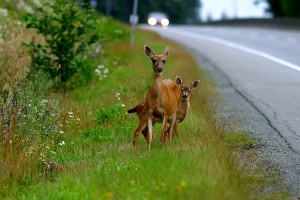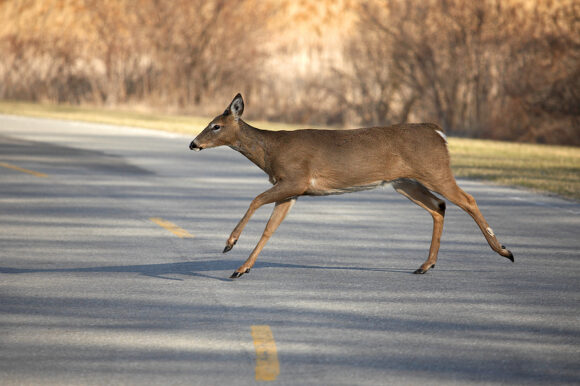Mississippi has the eighth highest rate of collisions with deer.
Mississippi Highway Patrol Sgt. Criss Turnipseed tells The Commercial Dispatch there were 3,438 vehicle collisions with deer in the state last year.
According to State Farm Insurance Company, which looked at data from July 1, 2014 to June 30, 2015, one out of 88 Mississippi drivers is likely to collide with a deer. That’s an improvement from the year before, when the odds were estimated at one in 84 and the state ranked sixth in the nation.
 Accidents with deer are particularly common during mating season, which varies throughout the state, said Bronson Strickland, a professor and wildlife specialist at Mississippi State University.
Accidents with deer are particularly common during mating season, which varies throughout the state, said Bronson Strickland, a professor and wildlife specialist at Mississippi State University.
The mating season varies throughout the state, Strickland said. In north Mississippi, the season is in late November and early December. In the southern parts of Mississippi, the season is in January.
In the Golden Triangle area, that season peaks during the month of December.
During breeding season, bucks roam, looking for mates, Strickland said. Simply because they’re so much more active, they’re going to cross roads more often.
Usually drivers can do something to avoid hitting the animals by paying close attention and looking ahead on the road, Strickland said.
Strickland said deer, along with many other animals that are active at night, have a structure in their eyes that reflects light. It allows them to capture more light and see better in the dark. But when a car’s headlights point directly into a deer’s eyes, it blinds them and causes them to freeze.
“If you were in a pretty dark place and someone stuck a very bright flashlight right in your eye, it would more or less blind you,” Strickland said. “So, it’s the same type of phenomenon.”
Collisions with deer happen most often just after dark or just before sunrise, according to Strickland and Turnipseed. Those are the times of day when deer look for food.
Mississippi has a large deer population – well over 1 million. Deer are common in forested areas, Strickland said. It’s rare to see one in a pasture or open field. Where woods encroach on and run alongside the highways will be where deer try to cross, so Strickland advised scanning those areas and to slow down when you see them.
“Be diligent especially at dawn and at dusk and at night,” he said.
Strickland also said deer whistles do not work.
“The best thing you can do is reduce your speed,” Turnipseed said. “Just slow down.”
Was this article valuable?
Here are more articles you may enjoy.


 Trump’s Tariffs Threaten to Endanger the Cheap American Car
Trump’s Tariffs Threaten to Endanger the Cheap American Car  State Farm Has Paid $2.5 Billion in Claims for LA Wildfires
State Farm Has Paid $2.5 Billion in Claims for LA Wildfires  TikTok’s New Owner Stands to Inherit 1,500 Safety, Privacy Suits
TikTok’s New Owner Stands to Inherit 1,500 Safety, Privacy Suits  Trump’s Tariffs Send Deliberate Shock to Heart of Global Economy
Trump’s Tariffs Send Deliberate Shock to Heart of Global Economy 